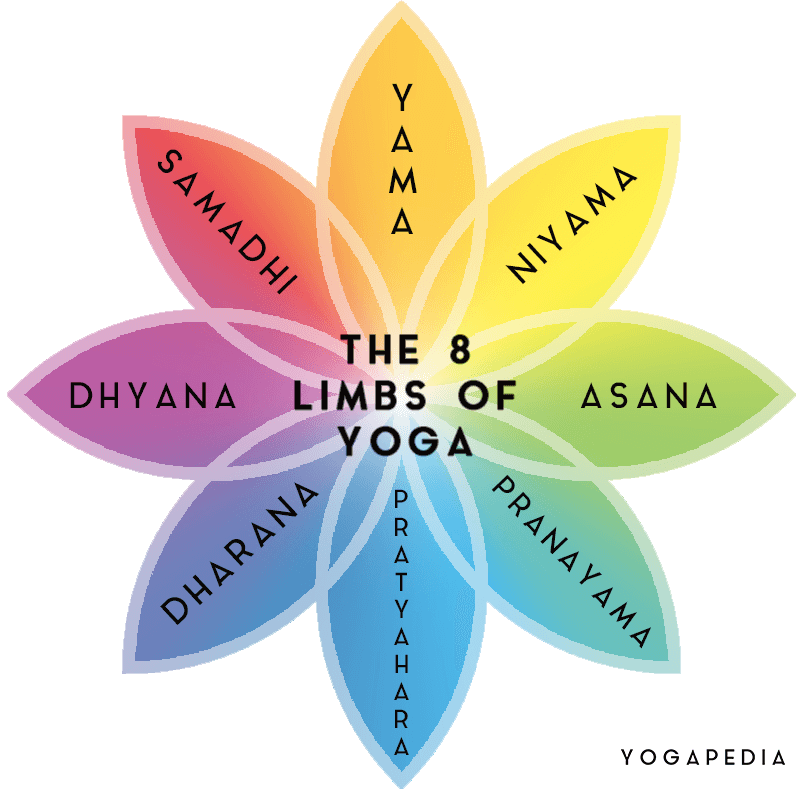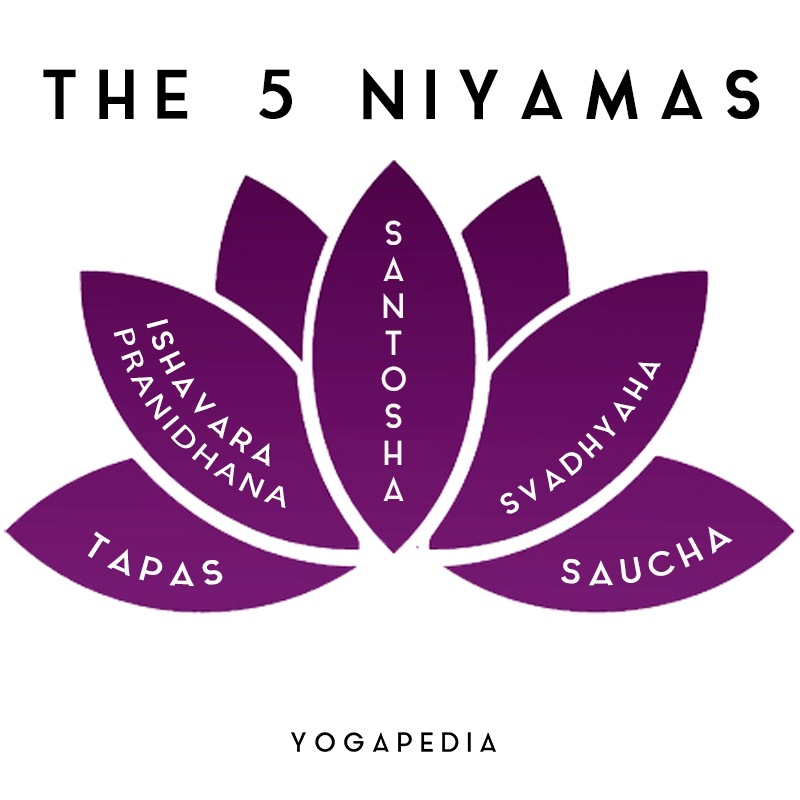Are you familiar with the second step of yoga: niyama?
According to Patanjali, in his classical text, the Yoga Sutras, yoga is like a tree with eight limbs. Each limb provides us with instructions to reach enlightenment, which is viewed as the ultimate goal of the lifelong yogic journey. (Learn more in A Journey Through The 8 Limbs of Yoga.)

I’ve done some study of Patanjali’s Yoga Sutras, but like anything else, if you don’t use it, you lose it. Which is why it’s always a good draft to continually review and study the Yoga Sutras in order to stay dedicated to our spiritual path.
Today, we’re going to review the second limb of these branches—the limb Patanjali calls the niyamas.
What are the Niyamas?
Patanjali describes the niyamas as a set of moral guidelines. Unlike the yamas, these moral guidelines point inward, rather than outward. They are a set of moral observances, pointed towards ourselves, so that we can live in the best way possible. These duties make us stronger, they build our character, while also preparing us for the ultimate aim of yoga—enlightenment. (Learn more about the yamas in The First Step of Yoga: Yama.)
The niyamas are ordered intelligently, moving from our physical bodies to our most subtle bodies. As you might already know, in yoga we are much more than our “meat suit,” as the physical aspect of the body has been wittily called.
We are much, much more. We are spiritual beings having a human existence within this meat suit.
The niyamas work to purify the body so that we can live from the purest, most spiritual aspect of ourselves.

Saucha (Cleanliness)

The first niyama deals with the grossest part of the physical body. It has to do with physical cleanliness.
We want to keep ourselves as clean as possible, in a practical way. We bathe, we tend to our hair, skin, and nails. We groom ourselves as primates do each other.
An unclean physical body is an obstacle to a pure internal self.
Saucha also refers to the food and drink we consume. We should limit toxins and aim to put the freshest, purest foods in our bodies. This supports spiritual growth and evolution. It also helps us do the physical practice of hatha yoga. (Learn more in Yama and Niyama: The Yogi's Moral Guiding Lights.)
Santosha (Contentment)
The second niyama refers to our state of mind. So often we are agitated in our minds and bodies. Our minds are a whirl of thoughts. Our bodies reflecting this whirling dervish of a mental state.

But what if we can still the fluctuations of the mind to come to a place of peace and contentment with what is?
Appreciating, accepting, and having gratitude for the reality that is our lives in this present moment is what santosha is all about. (Learn more in 5 Body-Positive Yogis You Should be Following on Instagram.)
Tapas (Discipline)
Yoga is no doubt, a discipline. Tapas is a fiery discipline, that all yogis need to have burning within in order to progress along the spiritual path. We need fire to stay motivated to practice yoga, pranayama, and meditation.

We need fire to say no to the things that bring us down and yes to the ones that uplift. This inner heat is what fuels our focus to remain true to the path of yoga. (Learn more in Tapas and the Discipline of Yoga.)
Svadhyaya (Self-study)
Yoga encourages us to get to know ourselves at the deepest level possible. This goes against our modern culture which teaches us to look outside of ourselves for answers and gratification.
But, the yogi learns—through svadhyaya—that all answers lie within.

If we are divine beings, we must get to know that part of ourselves, which takes attention, time, and practice. (Learn more in Svadhyaya: Spend a Lifetime Getting to Know Yourself & Deepening Your Yoga Practice.)
Ishvara Pranidhana (Surrender to the Divine)
Ishvara Pranidhana is all about letting go and letting God. It’s about trusting that there’s a higher power involved in this thing called life. We don’t have to bear the burden to make things happen.
Letting go of control and trusting in the natural ebb and flow of life is necessary to evolve spiritually.

It’s a lot like the Tao, which teaches us to surrender to the intelligent nature of a higher power. To understand this concept, consider how you breathe without making the breath happen. Consider how your heart beats on its own, just like the hearts of your dogs and cats do.
Nature is alive and continually evolving at its own innately wise pace.
So can you.
Finding the Truth Within Ourselves
As we practice and observe these five niyamas, we will no doubt have many "aha" moments along the way. We will get to know ourselves on all levels.
We start with the physical and we work inward.
Ultimately, we come to reside within our most spiritual nature. When this happens, all life becomes sacred. Our experiences are all expressions of God, a higher power, the Divine, or whatever word to describe this most sacred existence most resonates with your soul.
Yoga is a profound path, and these niyamas are limbs on the branches that make up the most beautiful, graceful, and mysterious thing we call yoga. (Learn more in Building the Foundation: Strengthening Your Yoga Practice Through Consistency.)
Have fun climbing your exquisite tree!
During These Times of Stress and Uncertainty Your Doshas May Be Unbalanced.
To help you bring attention to your doshas and to identify what your predominant dosha is, we created the following quiz.
Try not to stress over every question, but simply answer based off your intuition. After all, you know yourself better than anyone else.